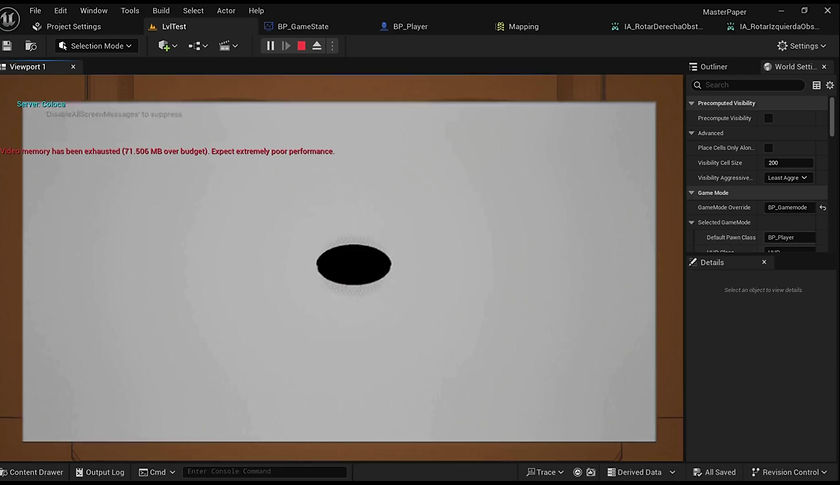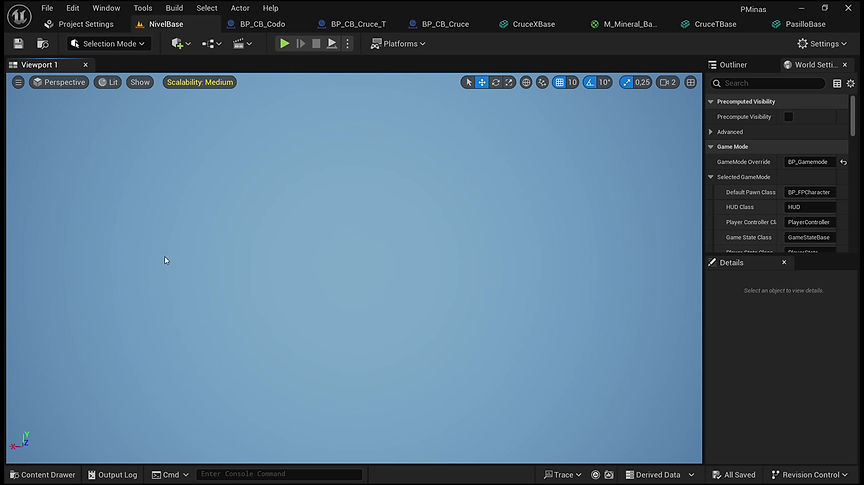top of page

MY 3D MODELS

MY 3D MODELS

GAME DEV
Unreal Engine 5

Paperman
This project is a proof of concept for a competitive multiplayer game inspired by Ultimate Chicken Horse, fully developed in Unreal Engine 5. The game allows multiple players to pick random objects and obstacles, strategically placing them on the stage to either help themselves or sabotage others in a race to reach the goal.
This prototype showcases emergent gameplay mechanics, where each match plays out differently based on player interactions. Future iterations could expand with more interactive objects, procedural levels, or additional game modes.
Key Features:
Online Multiplayer: Networked gameplay supporting competitive matches with multiple players.
Random Object Selection: Each player chooses an item/obstacle from a randomized pool (trampolines, saws, moving platforms, etc.).
Building Phase: After selection, players place their objects on the stage to either aid their progress or hinder opponents.
Objective: Be the first to reach the end of the level while navigating through dynamically created obstacles.
Custom Assets: Original 3D models designed in Blender, optimized for Unreal Engine 5.
Blueprint Scripting: Game logic implemented using UE5's visual scripting system for flexibility and rapid prototyping.

Procedural Dungeon
This project is a proof of concept for a procedurally generated dungeon designed as an expandable mine system, built in Unreal Engine 5. The dungeon dynamically constructs itself using a node-based algorithm, where each room (node) checks for valid pathways before generating connected sections. Empty rooms with unused doors are intelligently sealed to maintain coherence, while various minerals, crystals, and objects spawn procedurally throughout the environment.
Key Features:
Procedural Dungeon Generation:
- Nodes (rooms/tunnels) generate sequentially, validating connections before expansion.
- Unused doors automatically close to ensure a logically structured layout.
Dynamic Asset Placement:
- Minerals, crystals, and decorative objects spawn procedurally with randomized placement.
- Modular system allows for easy swapping of 3D models (e.g., different rock formations, ore types).
Scalable Material & Resource System:
- Supports multiple mineral/crystal variants with predefined compatibility (e.g., copper, gold, gemstones).
- Configurable spawn rates, sizes, and visual properties.
Custom 3D Models & Textures:
- Assets created in Blender, optimized for UE5’s Nanite and Lumen lighting.
Godot Engine 4

Recorrido virtual
This project is an immersive interactive virtual tour built using 360-degree images distributed across a network of interconnected nodes. Users can freely navigate between different areas of the environment either by clicking on interactive elements (hotspots) or by using a visual navigation map. This virtual tour was developed in the Godot Engine, with all core logic and interactions programmed in GDScript, Godot's native scripting language.
Throughout the tour, users can interact with specific objects that reveal multimedia content such as images, text, audio, and other informative resources. These elements provide additional context and enrich the overall experience.
The tour also features a virtual assistant/chatbot, which allows users to engage in conversation and ask questions about the environment (limited to the scope permitted within the tour). This assistant enhances the sense of interactivity and user engagement.
The experience is supported by a comprehensive user interface (UI) that includes:
-
General tour information and gameplay indicators.
-
Zoom controls.
-
Camera mode switching (e.g., drag or push view).
-
Quick access to key navigation and interaction features.
bottom of page
